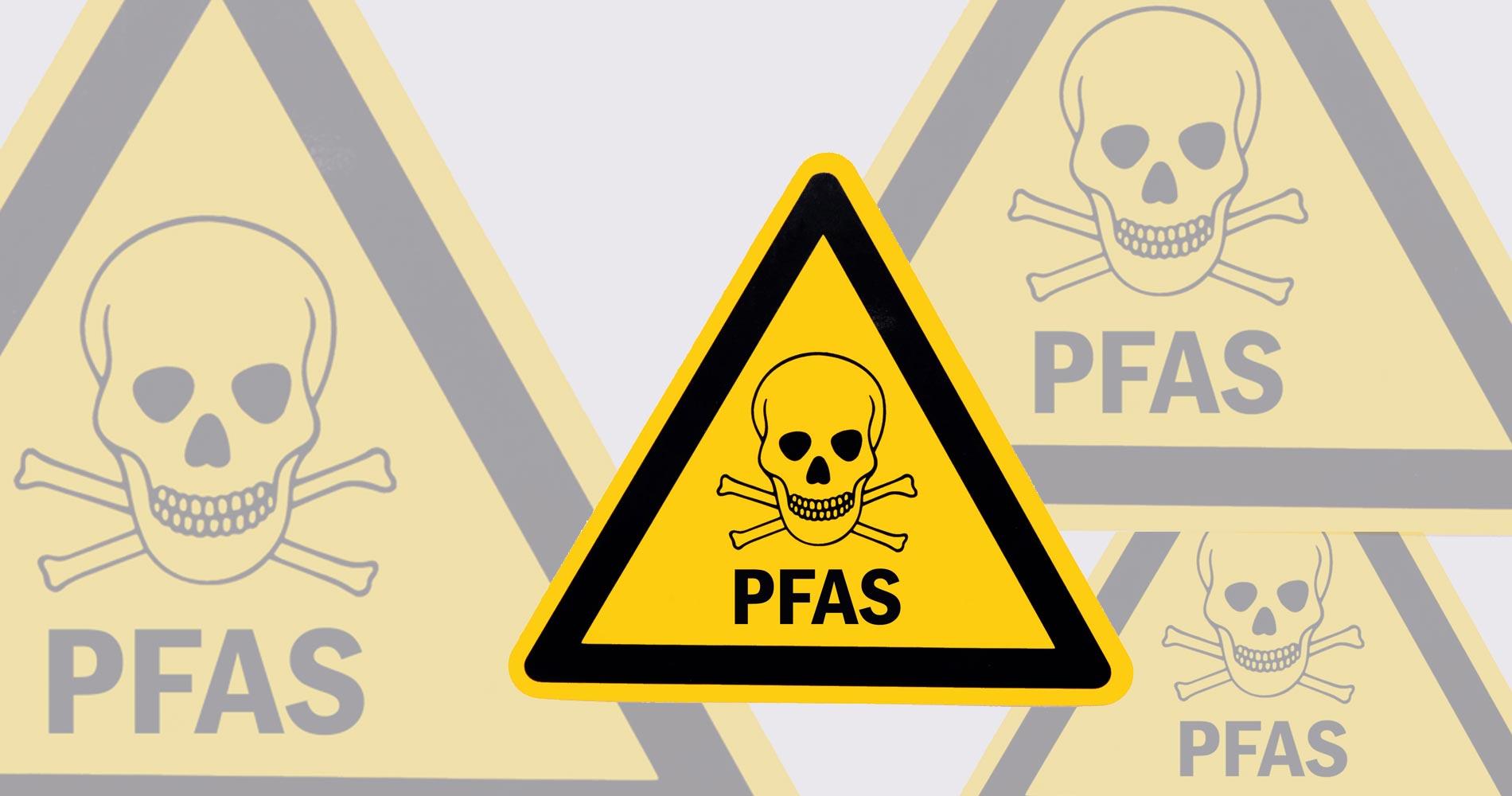The unique properties of Per- and polyfluoroalkyl chemicals, commonly known as PFAS, has led to their use in thousands of household products since the 1940s. However, they are not only hazardous to health, causing cancer, birth defects and schizophrenia, they are extremely difficult to remove from the environment. Two giants of the chemical industry, 3M and DuPont, have been shown to have known about the dangers for decades, and to have actively sought to prevent this becoming public knowledge. Despite several settlements involving millions of dollars, neither company has admitted liability, nor held responsible for eradicating PFAS from the environment. Two landmark cases may change this. But even if they do, could this health disaster happen again?
David Deegan
15 August 2023
Chinese version | Spanish version
Per- and polyfluoroalkyl chemicals, commonly known as PFAS, have unique properties such as resistance to high temperature, reduction of friction and repellence of oil and water. Consequently, they have been used in thousands of products since the 1940s, including fire-fighting foam, pizza boxes, non-stick pans, contact lenses, sofas, dental floss… the list goes on.
They are referred to as “forever chemicals” because they do not naturally break down over time, bind tightly to other substances and thus persist in the environment, accumulate in the bodies of humans and animals, and are extremely difficult to remove. This resistance to decay is part of their attractiveness in product creation but, having been proven to be highly toxic, it is also what makes them a global danger.
The damaging effects of PFAS, including cancer, infertility, damage to unborn children, neurological disorders such as schizophrenia, became publicly established in the late 1990s. A study published earlier in 2023 (“The Devil They Knew”: Gaber, Bero and Woodruff) has shown that forty years earlier, the two major companies in the U.S. who manufactured the majority of PFAS (3M, makers of Scotchguard, and DuPont, makers of Teflon) were well aware of the risks to public health. The study goes further, showing that not only did 3M and DuPont know PFAS were dangerous, they actively covered it up by suppressing unfavorable research and distorting public discourse, leading to billions of dollars in health and environmental damages globally.
The study’s authors found examples where company researchers identified abnormalities in their own workers who had been exposed to PFAS, but they repeated and redesigned the studies until abnormalities were no longer found. The study discovered an internal DuPont report in the early 1980s describing birth defects among pregnant plant employees. Despite assuring their employees that PFAS were “about as toxic as table salt”, shortly afterwards DuPont decided to remove women of childbearing age from any potential exposure to PFAS, a covert admission of harm.
In the following years both 3M and DuPont conducted internal studies which demonstrated a link between PFAS and prostate, testicular, bladder and kidney cancers. Hardly any of this information was shared with the public, regulators, or employees. Yet in 1991, years after discovering these risks, DuPont was still insisting that there was no need to notify the United States Environment Protection Agency (EPA).
During the 1990s various public studies connected PFAS to causing diseases and in 2001, a family living near a DuPont dump site in the US state of West Virginia filed suit alleging DuPont’s PFAS sludge had negatively affected the health of the family and surrounding community. Settled without admission of guilt, this was followed by a class action case on behalf of 80 000 people living in districts where PFAS had leaked into their water supply. More than 3500 class action lawsuits have been filed in West Virginia and Ohio alone since then.
3M settled numerous PFAS-related lawsuits since 2005, the most prominent being the multi-million dollar settlement with Minnesota and Michigan, but throughout the company never admitted liability for the contamination, and therefore cannot currently be held liable for the eradication of PFAS from the environment.
PFAS are routinely found around the planet today. In a recent study the levels of PFAS in rainwater was so high that they exceeded the limits set by the Environmental Protection Agency (EPA) for drinking water. Preliminary estimates suggest that the cost of removing PFAS from US drinking water is more than $3.8 billion per year.
Two landmark cases may change the situation.
In 2016, the EPA issued a new policy, that PFAS levels in drinking water should not exceed 70 parts per trillion (ppt). The small city of Stuart in the US state of Florida realized that their water supply, which contained 200 ppt and in some areas over 1000 ppt, was poisoning the community. Earlier this year, the EPA set a limit of 4ppt and, unlike their previous policy, this is enforceable meaning that if these limits are exceeded, those managing the water supply will face fines. A move like this highlights the level of concern the EPA has about the toxicity of even the most minute amount of PFAS. Since 2016 Stuart has spent over $20 million keeping its PFAS below 30ppt In order to meet the new limit, these costs will soar.
In the first landmark case, Stuart’s lawyers plan to argue in federal court that the companies that manufactured and distributed PFAS knowingly contaminated Stuart’s water supply and consequently should cover the cost of cleanup. If the case goes to trial and is successful, then many other cities, organizations and individuals will follow suit with similar cases.
The second landmark case concerns a family of four living close to a 3M factory in Zwijndrecht, near the Belgian port city of Antwerp. All members of the family were found to have PFAS levels in their blood up to 100 times higher than the accepted threshold. In May of this year the Antwerp Justice of the Peace found that 3M was liable and ordered the company to pay provisional damages of EUR 2000. 3M might still appeal the decision, since other local residents may also start similar proceedings, using the precedent as leverage.
In July 2022 3M agreed to pay EUR 571 million (USD 582 million) as settlement for alleged toxic discharges around the Zwijndrecht factory. So even if the case for the small Belgian family is ultimately unsuccessful, 3M’s troubles are not over. In May this year the Dutch government said it would hold 3M liable for polluting the Dutch part of the Western Scheldt River, allegedly caused by the same factory.
Regardless of the outcomes of these cases, action still needs to be taken in preventing PFAS harming the planet. The European Union aims to restrict all PFAS production by 2025. In February 2023 five EU countries (Germany, the Netherlands, Denmark, Sweden, and Norway) launched a proposal to ban PFAS in Europe. Regulators in Australia, Canada and Asia are seriously considering limiting the amount of PFAS in drinking water.
The 3M company announced in 2000 that it would phase out PFAS and stop making them by 2025, but other companies such as DuPont will not do this until much later, and this still does not address the issue of damages caused and the continued presence of PFAS in the environment.
But could this happen again? PFAS provide 3M with $1.3 billion in annual sales, so they will want a similarly profitable replacement for these ubiquitous “forever chemicals”. Can the public be confident that they will be safe and that they will be monitored to ensure any emergent issues are identified and swiftly reported?
Ongoing investigations and research demonstrate that industry involvement in the regulation of chemical policy risks the recurrence of damage to the environment, people and animals. So little was known about PFAS, because public agencies relied on DuPont to demonstrate the lack of risk, and as was the case previously with tobacco manufacturers, chemical manufacturers have a huge financial interest in PFAS and cannot be relied upon for objectivity. Moreover, the US Food and Drug Administration (FDA) does not require chemical companies to alert the FDA if they find a chemical is more dangerous than was known at the time it was approved. Unless the burden of proof is shifted to the chemical manufacturers, it seems another chemical cover-up and catastrophe can occur.







